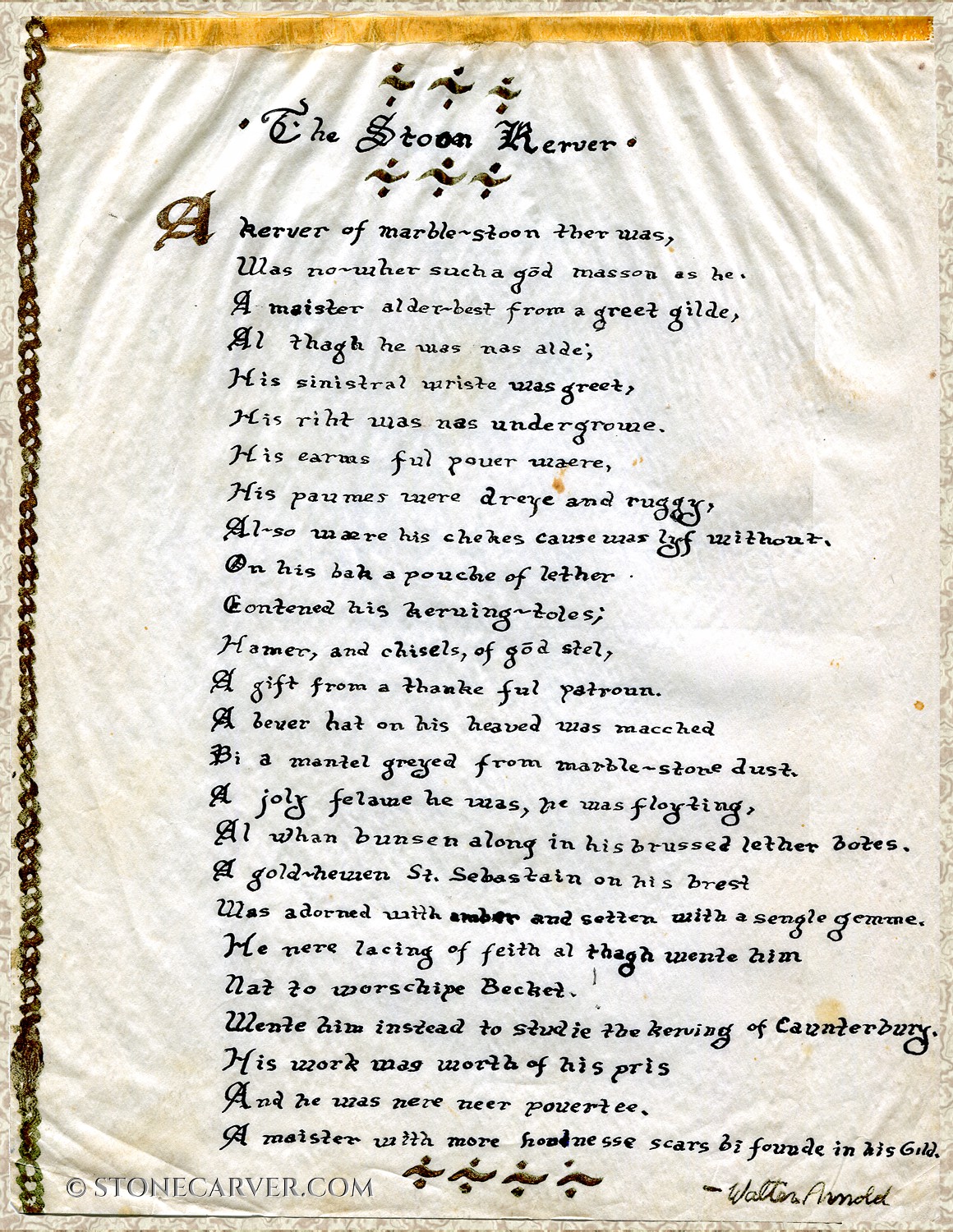The Canterbury Tale
During my third (and final, but that’s another tale) year of high school, we studied Chaucer’s Canterbury Tales. As a way to evade the final assignment (not wanting to be bored by doing a serious, scholarly research paper with citations and footnotes) I hatched a creative alternative. Creating an additional character for the pilgrimage, a “Stoon Kerver”, I wrote his tale in (my attempt at) Middle English, executed in calligraphy on an onion skin scroll.
While pointing out that I hadn’t fulfilled the actual assignment, and that the meter was a bit off, the teacher felt the paper had great sense of Chaucer’s style and it earned an A+. However, I feel that that my verse had a serious error. It lacked a key element of Chaucer: irony. His work was satirical, and his characters were flawed. Mine, instead, was idealized. Then again, this was a 16-year old’s fantasy. As such I suppose it could be considered an early example of fan fiction.

Here is the translation in modern English:
The Carver of Stone
With us came along a carver of marble,
One of the finest masons in the land,
A master of the guild, though not too old;
His left wrist immense, his right not small,
His arms quite powerful, his great palms dry and coarse,
As was his face from life outdoors.
Upon his back a leather sack contained his tools,
Chisels and hammers, being of excellent steel,
Given him for work by a grateful patron;
A cap of beaver fur upon his head was matched
By a mantle, greyed from marble dust.
A gay fellow, he played gentle tunes upon his flute,
Bouncing along, his feet in brushed suede boots;
Around his neck a Saint Sebastian medal hung,
Of gold adorned with Amber, and a single gem.
He was not lacking in faith, although he went not to worship Becket;
He went instead to study the sculpture of Canterbury.
His work was worthy of his price, and he was not near poverty;
A more honest master could scarce be found in his guild.
© Walter S Arnold / stonecarver.com